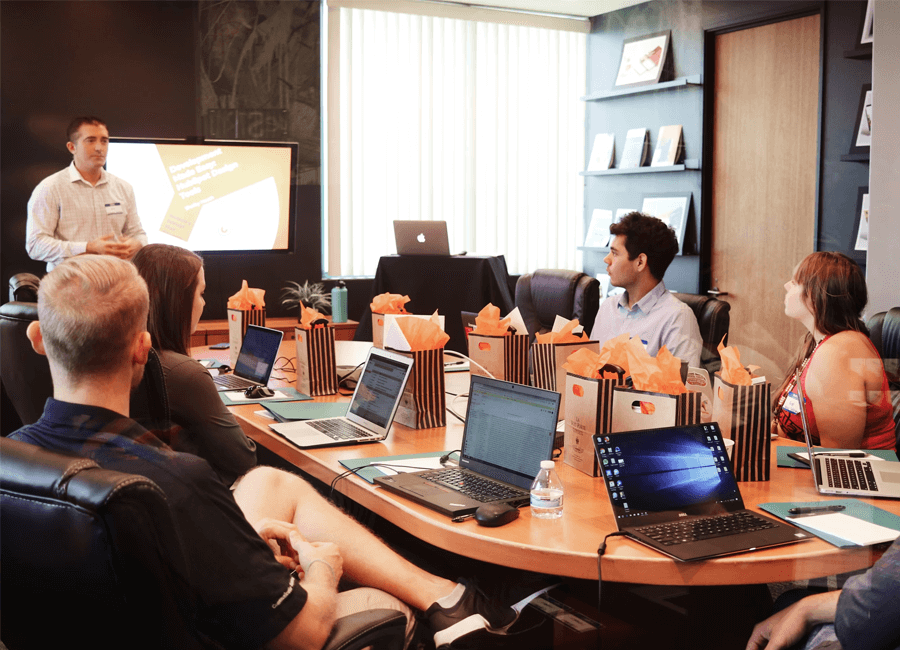Failure is one of the biggest fears we all share. Failing, in both a professional and personal capacity, is something we actively try to avoid, however it is always something we can learn from. Whether it’s learning from past mistakes or figuring out which strategy will actually deliver the results stakeholders want, forecasting failure can be a handy technique to help steer everyone in the right strategic direction.
So how can insight teams help stakeholders make decisions that steer them away from failure? With actionable insights.
| Tweet This | |
| Failure is something everyone tries to avoid, but we can't run away from it forever. What happens when failure is the one thing that could steer stakeholders in the right direction? |
The Importance of Knowing What Not to Do
There are a million and one ways to fail at any endeavour. The only reason we know about success is because sometimes we manage to stumble on the right decision. But sometimes, knowing what not to do is just as important, if not more so, than knowing what to do. When properly analysed, failure can be the best indicator of the right decision, and that’s why it’s important to try and figure out why things fail when building a strategy.
Even if stakeholders don’t know what to do, then knowing what not to do can be a great starting point to figure that out. In this Ted Talk, Dan Bush talks about the power of failure and how having the courage to act is crucial in growing both in business and in life. Dan opens by saying that "failure shapes our decision-making and keeps us from taking risks", but we need to remember that these are just micro-failures that give us a chance to pivot or course-correct in a reactionary way, and these reactions help us both act accordingly in the moment and in the future.
Stakeholders are bound to make a lot of mistakes, from simply misinterpreting data to implementing the wrong strategy that ultimately causes the organisation to lose traction in their industry. Each decision stakeholders make whether little or large shapes their future.
Trial and error is a concept we’re all familiar with mostly through personal experience, but especially in market research. While this isn’t a strategy that is embraced because of it’s strong associations with failure, it is still incredibly useful for most businesses. This strategy could also be called ‘rapid failure’ according to Dan, and it’s the best way to figure out in a quick timeframe what works and what doesn’t. Without failure, we wouldn’t have that priceless information of what works from that list of opportunities and putting them together to make a strategy that is almost guaranteed to succeed – ‘almost’ because nothing in life is certain.
How to Forecast Failure
So, if learning by failing experience is the best way to succeed, then how can we forecast failure?
This is where insight teams come into play. Market research and data science are key tools for stakeholder organisations if they want to get a glimpse into their potential future.
So, what does a good forecasting process look like? It depends on what exactly you’re planning to forecast, but usually it involves a lot of past and present data gathered, looking carefully for significant trends and patterns that will carry on into the future. Forecasting strategies can be used ad-hoc on a specific topic or on a continual basis.
When conducting an ad-hoc study, insight teams can set up and track a subject such as consumer buying habits or test the success of a potential marketing campaign on a shorter-term basis. Forecasting studies are a staple of market research, with many brands conducting these studies to test out strategies, products, services, and more to work out the kinks before releasing them officially for the best chance of success.
As an example, the Caravan and Motorhome Club wanted to understand a potential future of sustainable travelling holidays and what they can do to evolve, anticipating a rise in sustainable vehicles they might need to cater for and the ways in which their members would like them to evolve. This was a short-term study that used a range of qualitative research tools to better understand member opinions on the current moves towards sustainable vehicles (electric and hybrid vehicles) available in the travel industry, and then more specifically what they thought about the current plans their first tester green campsite. These insights helped them understand both the importance and the direction that consumer sustainability would take them, and they set to work on developing the first sustainable campsite for those members.
Continual forecasting strategies are typically used for internal business monitoring, setting key business objectives and better understanding the efficiency of current and future strategies throughout the organisation. For trend forecasting in the consumer world, using a panel or community is usually a good way to gain direct insights right from the source however brands would be focussing more on what consumers say they will do rather than what they actually might do; generally, the data collected in the teams within the organisation is a good resource to rely on, as it communicates current and previous customer movements, the success or failure of certain strategies (and the contexts behind it for good measure), and helps us predict what could happen in the future.
As any data manager will come to understand, using key performance indicators to measure data on particular strategies and decisions at regular intervals is important to making this internal monitoring and forecasting strategy work.
| Tweet This | |
| If learning by failure is the best way to succeed, can we forecast failure to try and make better decisions in the moment? |
When Forecasting Fails
We all know that forecasting isn’t always accurate. There are situations that arise completely out of the blue that derails everything (looking at you there, COVID), some data missing from the analysis that would sway decision-making in a different direction, and important contextual information that doesn’t always get factored in as much as it should; but all of this leads to one thing: failure. So what happens when the insights fail?
This is an uncomfortable question for most insight teams, as we like to think that the more insights we have, the more impervious the decision based on the insights will be, which isn’t necessarily true. The more actionable insights we generate, the larger the chance of stakeholders making the best decision, but we will never be able to reduce the chance of failure to absolute zero.
The best thing to do in this scenario is to simply learn from our mistakes, no matter how hard it hurts to think about them. Putting all of the context and insights behind the decision in one place so we can look back on it later can inform both stakeholder and insight teams when making decisions in similar situations in the future.


















